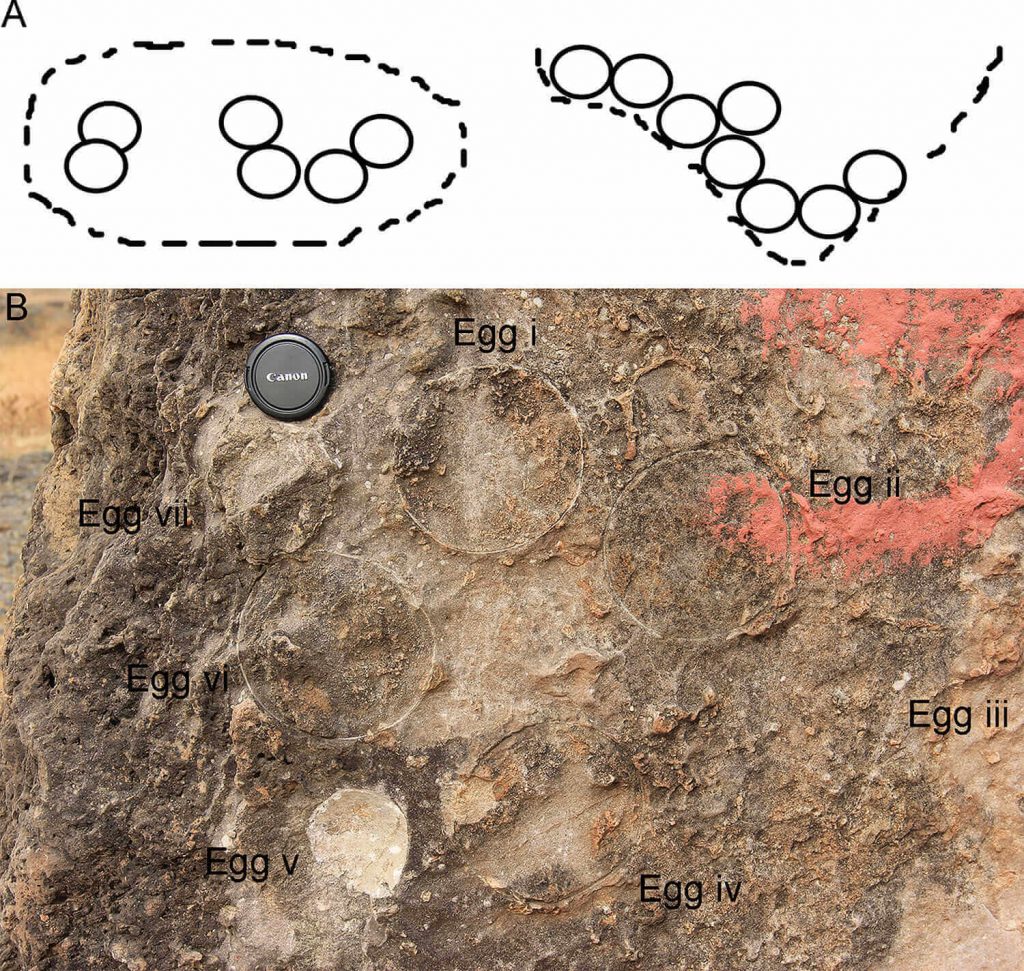Paleontologists from the universities of Delhi and New Delhi found 256 fossilized eggs during excavations in India.
 Fossilized eggs of titanosaurs of varying degrees of preservation. Image: Dhiman et al., PLOS ONE
Fossilized eggs of titanosaurs of varying degrees of preservation. Image: Dhiman et al., PLOS ONE
Titanosaurs are a genus of large herbivorouslizard dinosaurs. These animals reached a length of more than 10 m. The authors of the study identified three different types of clutch (circular, combined and linear) and six types of eggs (oovids). This indicates a greater species diversity of titanosaurs than previously thought.
Based on nest location, paleontologistsconcluded that these titanosaurs buried their eggs in shallow pits, much like modern crocodiles. At the same time, individual pathologies, for example, a rare case of "an egg in an egg", indicate that the reproductive physiology of these dinosaurs resembled that of a bird. Most likely, titanosaurs laid eggs sequentially, like modern birds.

 Three types of masonry: circular (top), linear (bottom left) and combined (bottom right). Image: Dhiman et al., PLOS ONE
Three types of masonry: circular (top), linear (bottom left) and combined (bottom right). Image: Dhiman et al., PLOS ONE

Researchers also believe that titanosaurspreferred colonial nesting. This is evidenced by the relatively close location of the clutches. However, the fact that the distance between the nests left little room for adult dinosaurs supports the theory that parents abandoned newborn children to their fate.
Paleontologists note that to restorethe reproductive behavior of fossil animals is very difficult. But such a rare large-scale find reveals many details from the life of the ancient inhabitants of the Earth.
Read more:
A giant sunspot is turning towards the Earth. It is visible to the naked eye
Scientists have figured out how to restore the heart after an attack
TESS discovered a "new Earth": a stone planet with water is in the habitable zone